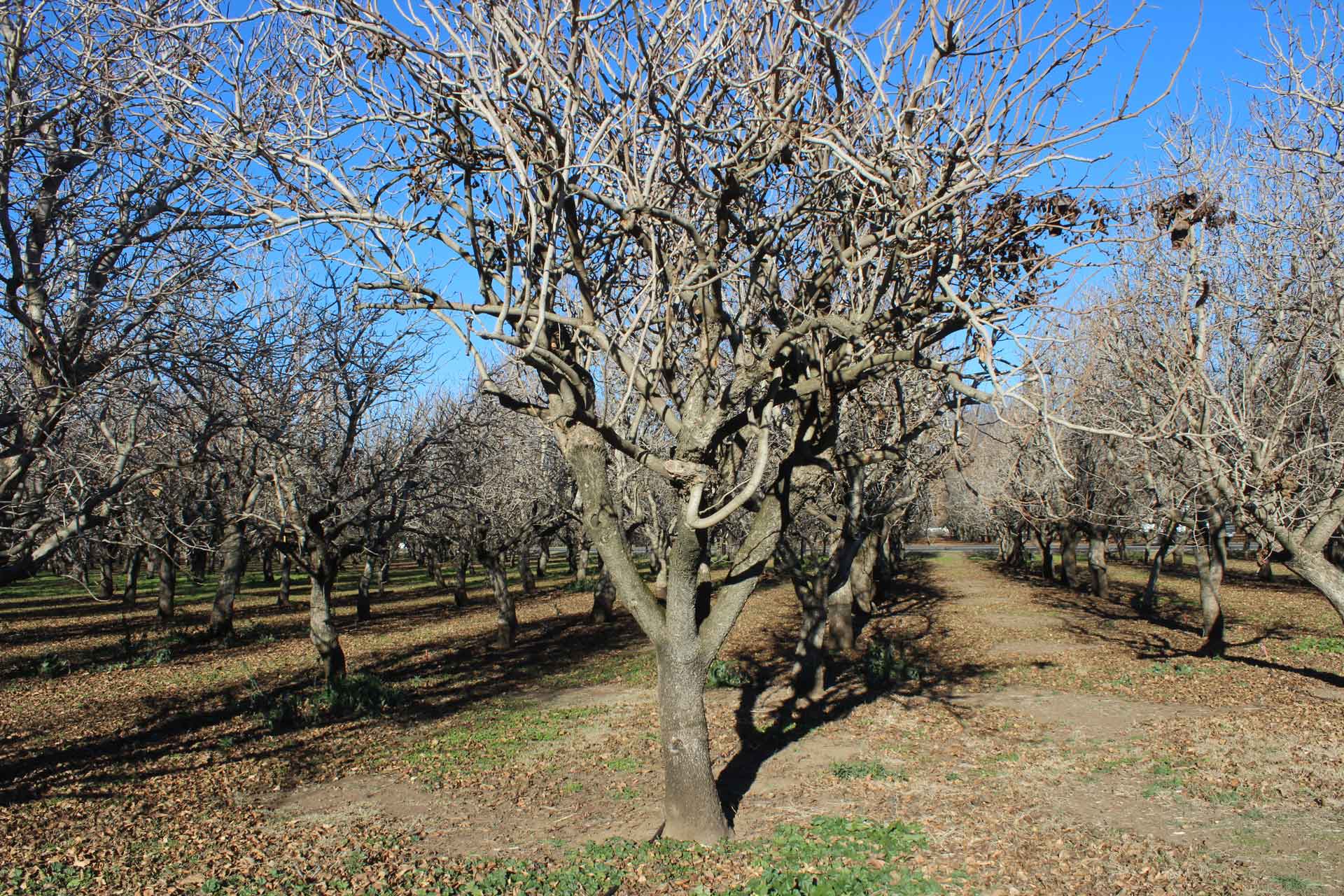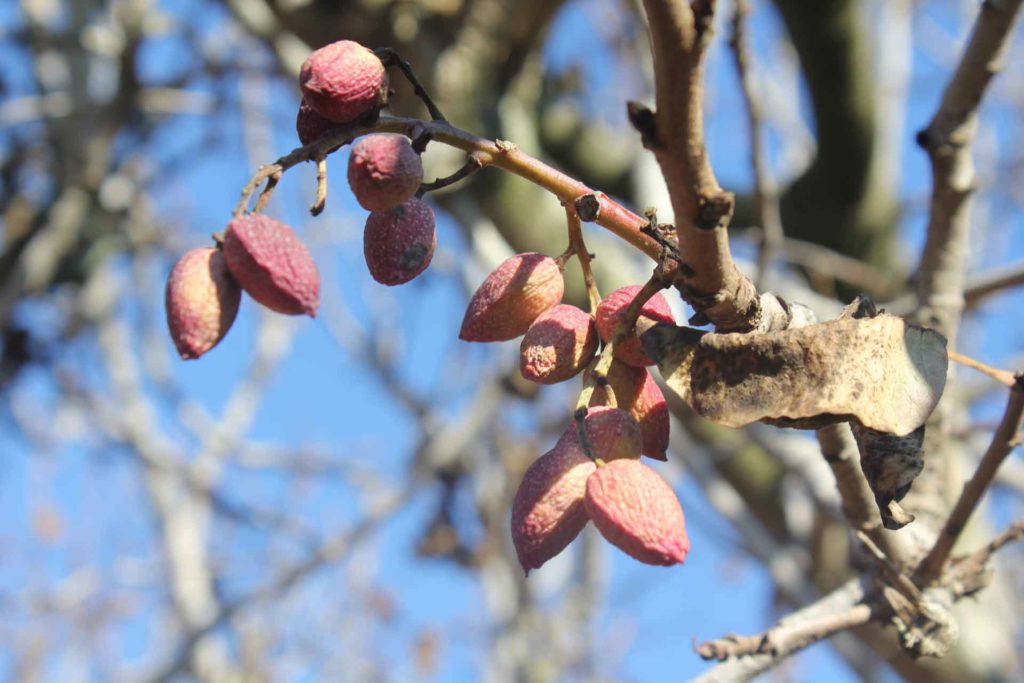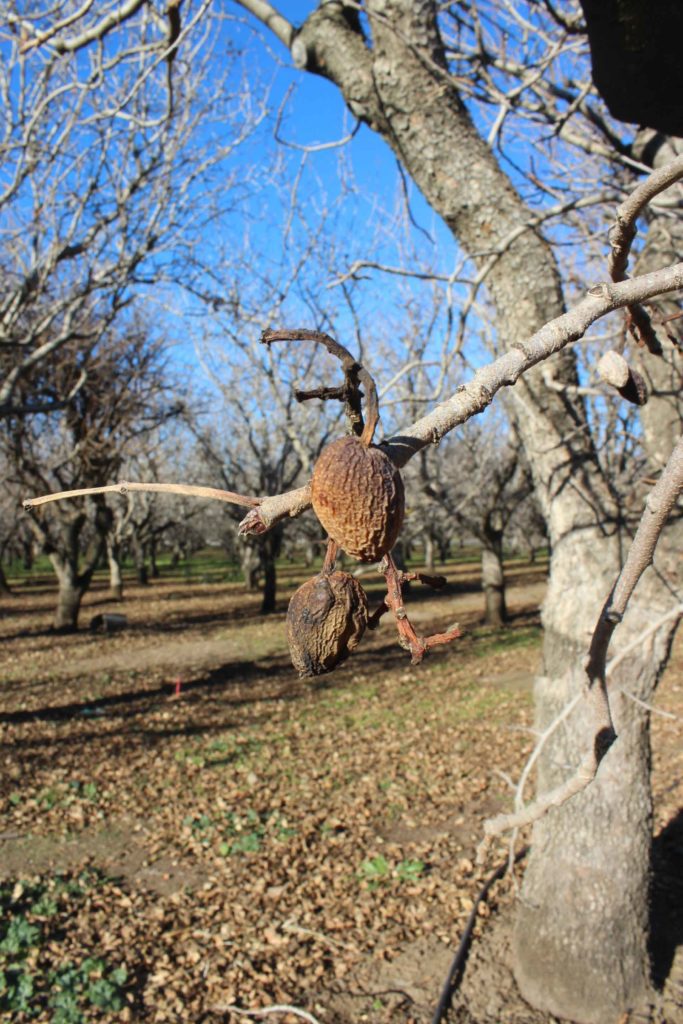Following pistachio harvest it may be time for the trees to rest, but growers still need to be sure their orchards are ready for winter dormancy.
While 2019 may be notable for lighter naval orangeworm (NOW) damage compared to other years, growers are advised to continue sanitation efforts to control populations of this insect pest. Orchard floors with ruts or low places where mummy nuts can accumulate will be home to an overwintering NOW population that will grow over the season and require more pesticide applications.
Postharvest is a good time to break that chain and reduce pest pressure by blowing mummies off berms where they can be shredded or buried.
Early fall and winter are also good times to scout for mealybug infestations as numbers peak at this time. Sooty mold on leaves can be an early sign of mealybug infestations in pistachio trees. Later, white aggregations can be spotted on tree trunks and the undersides of main scaffolds. Mealybugs do no damage during this time of year and are also targeted by predator insects. Locations of mealybug aggregations should be noted for control measures in the spring.
Trees infected with fungal diseases can also be observed after defoliation. Removing and shredding affected limbs can reduce the amount of inoculum in an orchard. Before leaves fall, infected leaves will have large necrotic lesions.
Surveying for weeds postharvest accomplishes two things. First, summer weeds that escaped the current weed control program can be identified and adjustments planned for control next season. Fall monitoring of weed species will also pickup any winter weeds that are emerging.
After the first rainfall, check to see how effective pre emergent herbicide applications are. Note any perennial seedlings in row middles and record weed infested areas and map to plan spring herbicide applications.
Tree nutrition needs to be addressed postharvest. Prior to dormancy, the tree’s root hairs are foraging for nutrition to enhance photosynthesis and gain mass for carbohydrate storage. Building structure in those root hairs requires calcium, certified crop advisor Rich Kreps said. Along with calcium, phosphorus and potassium play key parts in the nutrition program.
Those three nutrients need to be in plant ready forms and applied to the root zone with a carbon source. To find an interactive nitrogen management spreadsheet go to http://ucanr.edu/p/41860.

Cecilia Parsons
Cecilia Parsons has lived in the Central Valley community of Ducor since 1976, covering agriculture for numerous agricultural publications over the years. She has found and nurtured many wonderful and helpful contacts in the ag community, including the UCCE advisors, allowing for news coverage that focuses on the basics of food production.
She is always on the search for new ag topics that can help growers and processors in the San Joaquin Valley improve their bottom line.
In her free time, Cecilia rides her horse, Holly in ranch versatility shows and raises registered Shetland sheep which she exhibits at county and state fairs during the summer.


















